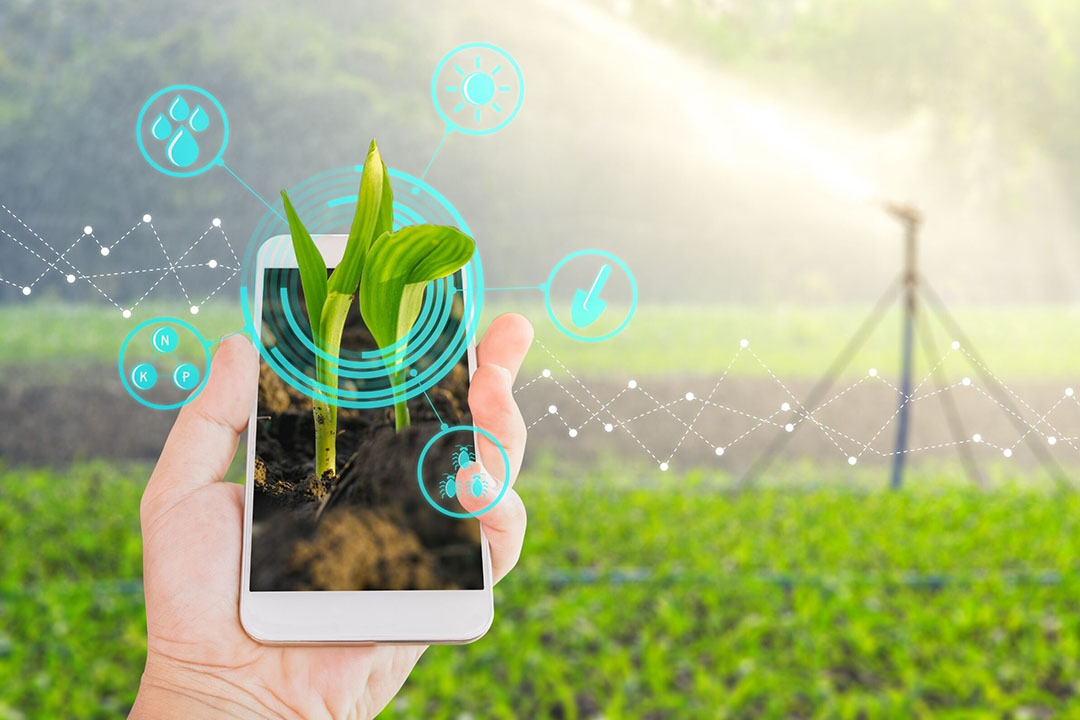Smart Farming In the age of technological innovation, the world of agriculture is undergoing a profound transformation. The integration of the Internet of Things (IoT) into farming practices has given rise to a concept known as Smart Farming, where data-driven decisions, automation, and precision are the cornerstones of modern agriculture. In this article, we will delve into the fascinating realm of Smart Farming and explore how the Internet of Things is shaping the future of farming.
The Essence of Smart Farming
Smart Farming is not merely a buzzword; it represents a fundamental shift in the way we approach agriculture. At its core, it involves the utilization of advanced technologies, including the Internet of Things, to optimize farming operations and maximize agricultural productivity. Gone are the days of traditional farming practices reliant on intuition and manual labor; Smart Farming brings data and connectivity to the forefront of agriculture.
Understanding the Internet of Things (IoT)
Before we dive deeper into the world of Smart Farming, let’s unravel the concept of the Internet of Things (IoT). At its essence, IoT refers to a vast network of interconnected devices and sensors that collect and transmit data over the internet. These devices, often equipped with sensors and communication modules, enable real-time data exchange and remote monitoring. In agriculture, IoT has found its niche as a game-changer.
The Role of IoT in Smart Farming
1. Smart Sensors in Agriculture
The backbone of Smart Farming lies in the deployment of smart sensors across farms. These sensors serve as the eyes and ears of the agricultural ecosystem, continuously collecting data on various parameters. Key examples include:
- Soil Sensors: These measure moisture levels, temperature, and nutrient content in the soil. By providing real-time data, farmers can tailor irrigation and fertilization to specific needs, reducing resource wastage.
- Weather Stations: IoT-enabled weather stations offer precise meteorological data, aiding in weather prediction and risk management. Farmers can make informed decisions about planting and harvesting schedules, minimizing weather-related losses.
- Livestock Tracking: Smart collars and tags on livestock enable remote monitoring of their health, location, and behavior. This not only enhances animal welfare but also improves breeding practices.
2. Precision Agriculture
One of the key outcomes of Smart Farming empowered by IoT is precision agriculture. This approach involves the precise management of resources, such as water, nutrients, and pesticides, to optimize crop yields while minimizing waste. IoT facilitates precision agriculture in several ways:
- Variable Rate Irrigation: By considering soil moisture levels, slope, and crop type, farmers can adjust irrigation rates on a per-field basis. This results in efficient water usage, conserving this precious resource.
- Precision Planting: Smart planting equipment can ensure that seeds are sowed at the ideal depth and spacing for optimal growth, improving crop uniformity.
- Targeted Pesticide Application: IoT data can identify areas of a field that require pest control, reducing the need for widespread pesticide use and minimizing environmental impact.
3. Data-Driven Decision Making
Perhaps one of the most significant transformations brought about by Smart Farming is the shift towards data-driven decision making. Farmers are no longer reliant solely on their instincts and past experience; they have access to a wealth of real-time data and analytics. This data empowers them to make informed choices about crop management, resource allocation, and pest control.
- Crop Yield Prediction: Through AI and machine learning algorithms, Smart Farming can predict crop yields based on historical data, weather patterns, and soil conditions. This helps farmers plan their harvests and market strategies more effectively.
- Disease Detection: Machine learning algorithms can analyze images of crops to detect signs of disease or pest infestations. Early detection allows for targeted intervention, reducing crop losses.
- Resource Optimization: By analyzing data on resource usage, such as water and fertilizers, farmers can identify areas where efficiency can be improved, reducing waste and costs.
4. Automation and Robotics
IoT-driven automation has also found its way into agriculture. Robots and drones equipped with AI algorithms are employed for various tasks, reducing the need for manual labor and increasing efficiency.
- Robotic Farming: AI-powered robots can perform tasks such as planting, harvesting, and weeding with precision. They work tirelessly, ensuring consistent results and reducing labor costs.
- Aerial Drones: Drones equipped with cameras and sensors can monitor vast expanses of farmland, providing valuable insights into crop health, irrigation needs, and pest infestations.
5. Supply Chain Transparency
IoT and blockchain technology are converging to enhance transparency in the agricultural supply chain. Consumers can now trace the journey of agricultural products from the farm to their table, ensuring authenticity and quality control.
- Transparent Supply Chains: Blockchain technology allows for a transparent supply chain where consumers can verify the origin and authenticity of products. This fosters trust and encourages ethical and sustainable practices.
- Quality Assurance: By tracking the conditions under which crops are grown, harvested, and transported, IoT and blockchain technology ensure that food products meet the highest quality standards.
Challenges and Considerations
While the integration of the Internet of Things into agriculture holds immense promise, it also presents challenges and considerations:
- Data Privacy and Security: The vast amount of data collected in Smart Farming raises concerns about data privacy and security. Ensuring that sensitive agricultural data is protected from breaches and misuse is paramount.
- Digital Divide: Access to advanced technology can be uneven, creating a digital divide between large commercial farms and smaller, resource-constrained ones. Efforts are needed to ensure equitable access and benefits.
- Cost and Adoption: Implementing IoT technologies can be costly, and not all farmers have the resources to invest in them. Government support and incentives may be necessary to promote widespread adoption.
- Training and Education: Farmers need the skills and knowledge to effectively use IoT technologies. Training programs and educational initiatives are essential for successful adoption.
Conclusion
Smart Farming powered by the Internet of Things represents a seismic shift in agriculture. It transcends traditional farming practices, bringing data-driven precision. Automation, and connectivity to the forefront. From smart sensors and precision agriculture to data-driven decision making and supply chain transparency. LoT is reshaping the future of farming. As the world grapples with the challenge of feeding a growing global population while preserving the environment, Smart Farming stands as a beacon of hope and innovation in the field of agriculture. It embodies the essence of adaptability and sustainability, ensuring that we continue to cultivate the earth efficiently and responsibly.

